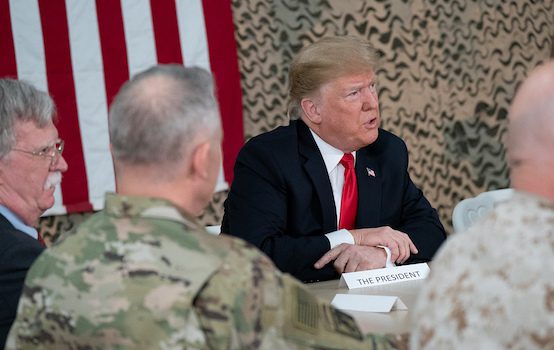Traumatic Brain Injury and the Hidden Costs of War

Loren DeJonge Schulman and Paul Scharre comment on the news that at least 109 troops suffered traumatic brain injuries during the Iranian missile attack in Iraq last month:
But we soon learned that numerous American servicemembers were being treated for brain trauma. The Pentagon’s climbing numbers and mixed messages on the seriousness of the injuries show how far the military has come in responding to traumatic brain injuries (T.B.I.s) — but more important, how far it still has to go.
It is also a warning about how Americans weigh the costs of military interventions, which at best reflects only the headlines of conflict and rarely considers the long-term effects.
The creep of reports is not surprising for an injury as insidious as T.B.I. The symptoms of mild T.B.I. can be subtle, and diagnosis can take weeks or months. The fact that more than 100 troops have been found to have T.B.I. from the attack so quickly is a sign that the military’s system for screening and identifying troops with the trauma is functioning.
What is still broken is how both the president and defense leaders characterize the scope and impact of brain trauma or weigh the need to mitigate its effects. In the field, American forces understand the importance of immediately examining personnel exposed to explosions for brain injury and the urgency of prevention and treatment.
But in Washington, such understanding is far behind, as we saw in the president’s most likely calculated determination, shortly after the strikes, that the injuries were “not very serious.”
The number of injuries has steadily increased with each passing week. The first thing we heard was that no one had been hurt. Then there were only 11 injuries, then 34, and then 50. A few days later, it was 64, and now it stands at 109. As the authors say, the symptoms of this injury may take time to become noticeable, so we should probably expect this number to keep rising in the weeks to come. We are still finding out how many Americans were injured in this attack. The Trump administration has an incentive to minimize these injuries in this case because they happened as a result of the president’s decision to order an illegal assassination. That is an attempt to duck responsibility for the consequences of the assassination, and it also does a disservice to military personnel because it contradicts what the military has learned about these injuries:
The minimizing statements in the wake of the Iran missile strike by the president, Defense Secretary Mark Esper and Centcom contradict the department’s own extensive medical research on the severity of T.B.I. and the potential need for a lifetime of monitoring or intervention. Many initially judged these comments as part of the downward trend of transparency from the Defense Department. But slow acknowledgment is more likely a lingering hang-up from the invisibility of this injury that trickles down to both flawed short-term assessments and long-term understanding of costs and risks.
Such narrow lenses of the impacts of war pervade in politicians’ talking points, public debate and even military training and planning.
The president’s response to the increasing number of injuries earlier this week has been to shrug and insist that he doesn’t care what anyone else says about it:
“And then a couple of weeks later I started hearing about people having to do with trauma, head trauma,” he said. “That exists. But it’s, you know, I viewed it a little bit differently than most, and I won’t be changing my mind on that.”
No one will be surprised by the president’s rejection of information that contradicts his ignorant views, but it is an insulting dismissal of serious injuries that shows how little concern he has for the troops that he put in harm’s way. The Veterans of Foreign Wars had demanded an apology from the president when he first dismissed these injuries as nothing more than headaches, but that obviously won’t be happening.
Failing to count these injuries in the official statistics of wounded from the wars in Iraq and Afghanistan has also masked the full costs of these wars. Schulman and Scharre continue:
For too long, its official casualty statistics have significantly undercounted the true number of wounded personnel because they often miss individuals with T.B.I. As a result, the numbers severely underestimate the costs of today’s wars and the long-term interventions necessary to address them.
The Defense Department’s official count is 52,000 servicemembers wounded in the wars in Iraq and Afghanistan. Over 413,000 servicemembers have been diagnosed with T.B.I. since 2000 [bold mine-DL]. That figure combines both combat and noncombat causes. Yet the huge spike in brain trauma numbers in the years during and following the peak of the Iraq and Afghanistan wars speak to the volume of combat-related injuries. The true number of war wounded is most likely in the hundreds of thousands [bold mine-DL].
When we count the full costs of reckless and unnecessary military action, we need to remember that many veterans suffer from similar invisible injuries, and those injuries need to be taken seriously.
Comments